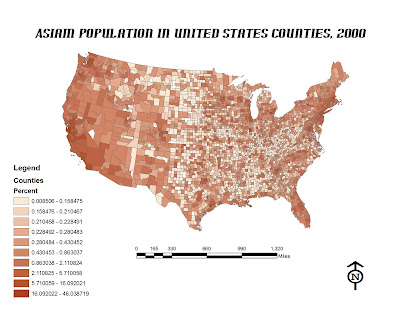This lab is about the LA Station Fire in 2009, and I will discuss the movement of the fire and the factors that affecte its spreading pattern. The Morris fire started by arson on August 26th and was 98% contained on September 26th. One reason for why it took a month to contain was because of the difficult terrain that made it extremely difficult for the firefighters to do their jobs. A total of 27 fire engines, and 5 helicopters, and 647 personnel were assigned to this fire. 160,577 acres were burned and 89 homes were destroyed (InciWeb).
The first map that is shown includes the DEM of the LA county as well as the spreading of the fire (Greninger). The DEM file shows the elevation of the area, with elevation increasing with lightness. To start, I will discuss the general spreading pattern of the fire. It seems the fire spread north and expanded in the western and eastern direction. Between August 30th and September 1st the fire grew in size rapidly. Overall, the fire moved in all directions from where it started, except for south.
The spread was chosen to be partially transparent for ease of viewing the DEM map. The pattern that seems to show that the fire tended to move along the ridges and sides of hills, and is probably because of the open air and currents that pass through the mountainous passes. It can be seen that the fire started on the outside of the mountains on the side of the populated area, which would make sense that this fire was arson.
This second map is of the fire movement with respect to fuel rank (“Fuel Rank”). Fuel rank is measured by two factors: the frequency or likelihood of a given area to burn, and the potential fire behavior of the area. This system ranks them from 1, little or no threat, to 4, extreme threat (“Fire Rating Danger Areas”). The fire started burning on land that was marked as “high” threat and as time went by it spread to areas that were “moderate” and some places that were “little or no threat”. It appears that the fire was stopped when it reached those “little or no threat” areas, which supports their reason for being given that ranking.
Some of the effects from the fires on the mountains could be landslides and flooding. After a fire, the brush is burned away and nothing is able to keep the top layer of soil intact, so the soil has a much greater propensity to slide down the mountain. In addition to landslides, floods are also likely to occur because the shrubbery and roots in the topsoil of the hillside are not there anymore, thus leaving nothing to absorb the water runoff (Riebe).
References
“All Station Fire Perimeters.” Los Angeles County Enterprise GIS. 28 September 2010.
“Fire Danger Rating Areas.” CDF Data. 10 June 2010.
“Fuel Rank.” California Department of Forestry and Fire Protection: FRAP. 2007.
Riebe, Clifford. “Wildfires, Floods and Sediment Delivery in Southern California.” Vignettes: Key Concepts in Geomorphology.
http://serc.carleton.edu/vignettes/collection/25470.html - stability and runoff
“Station Fire News Release.” InciWeb: Incident Information System. 31 August 2009. http://inciweb.org/incident/article/9640/












